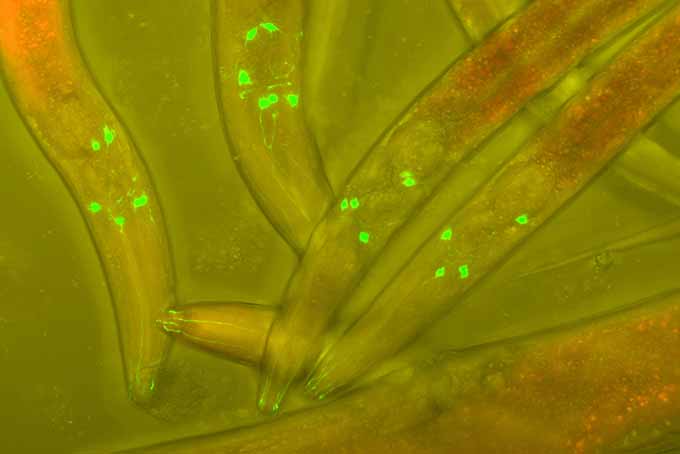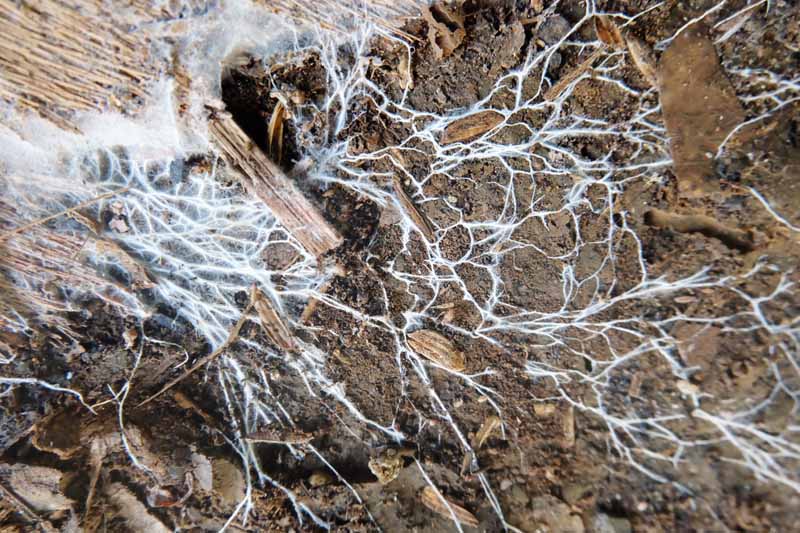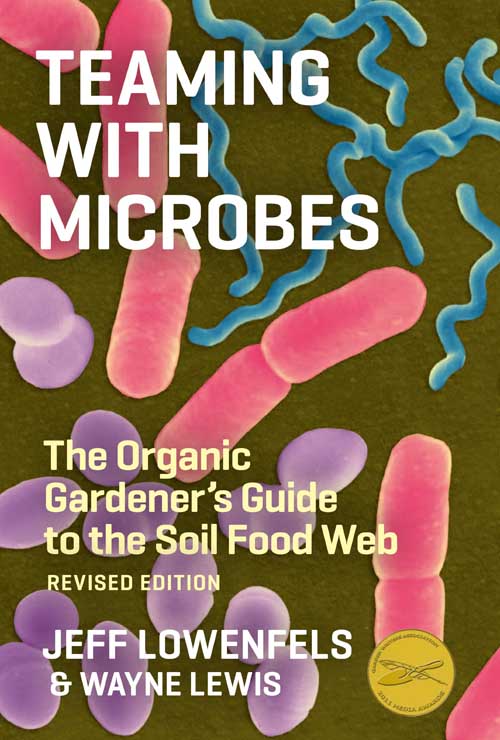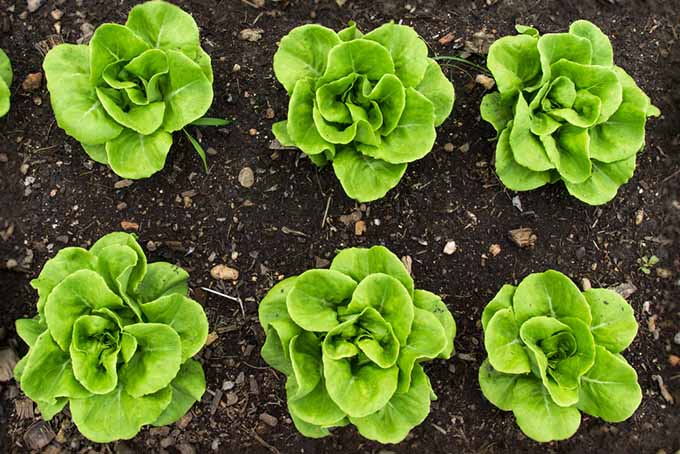“Teaming with Microbes,” authored by Alaskan-based writers Jeff Lowenfels and Wayne Lewis, still prevails today as an important epistle for farmers and gardeners everywhere.
A dense yet page-turning read, it will open the minds and eyes of every gardener, acquainting them with the microscopic wilderness at their feet and in the soil.

Teaming with Microbes: The Organic Gardener’s Guide to the Soil Food Web
The book, available via Amazon, reveals the true scope of an environment we mostly cannot see – and which we either choose to use or abuse when we garden, with no grey areas in between!
Originally published in 2006, the authors expound on the intense soil science research of one Dr. Elaine Ingham – whose groundbreaking (pun intended) work in the 1980s led to an entirely new understanding of what it means to be a gardener: whether through growing food, landscaping, or nursing perennial plants.
The soil awareness that fuels “Teaming With Microbes” needed to be heard back in the 80’s, as well as a decade ago when demands for non-chemical organic food exploded.
In fact, interest in organic food and gardening became so great, that the authors printed another edition of the book again in 2010 – updated with more information for the voracious pesticide-free gardener (and the edition which forms the basis of this review).
But is it a book that still applies to gardeners, and the world at large today?
The answer: yes! Throughout its pages, this cleverly-worded read makes you realize that there is a fathomless soil food web in your garden, just as fragile as any other living ecosystem around you.
Whimsical, quaint language is interwoven with dense, scientific descriptions of big fish microbes munching on little fish microbes, fungi munching on bugs, nematodes munching on everything… and so on and so forth.
What the crazy dog-eat-dog soil jungle makes you realize: if you kill one thing, you might be taking out everything else – even the natural good stuff for your garden that you want to keep around!

Sure, fertilizers work exceptionally well for some plants, though you’ll learn that not all of them do. It is also revealed that pesticides and herbicides artificially change the soil environment, reducing the soil’s innate robustness and health – on top of making your food potentially toxic and unhealthy to eat.
Though it describes an alternative to chemical gardening, the book doesn’t avoid referencing the use of pesticides, herbicides, and fertilizers when they ARE needed. Their motto: “Use them sparingly – and remediate the soil immediately afterward.”
All the same, Lewis and Lowenfels’ book is full of theories seemingly in staunch opposition to chemicals, which can confuse. You can tell the authors are trying not to stir the pot with political or cultural stances against major chemical-producing companies like Monsanto (most likely out of a fear of lawsuits).

Still, a small nod at the appropriate use of chemicals nevertheless helped this anti-chemical gardener’s bible spread far and wide. It manages to provide the hard facts about ecological awareness and impacts on your garden – without sounding too far “left.”
A Quick Book in Two Parts
The book is methodically split into two sections. The first: very scientific, designed to douse your mind with the fullest, most minute understanding of the soil food web possible, and how it relates to plants.
I found myself rather mired by some of the thick scientific concepts myself – filled with words like “photoheterotrophs” and “basidiomycetes.” But if you’re a truly passionate gardener, you’ll sink your teeth right into these terms, knowing they’re an important part of the bigger picture.

Even the authors admit that the first part may be difficult for you to get through– but they encourage you to dig in. Try not to skip ahead!
Even if you’re not interested in science, give it a try. You’ll find the language is put forth in a relieving, refreshing enough way to make it easy to grasp.
The second part is all about applying this perspective of the food web to your garden, arguably the juiciest part of the book. Once finished, good gardeners will ask themselves: if we chemically destroy the things we DON’T like, what other myriads of beneficial things could we be mistakenly keeping away from our plants?
If any gardening book pushes you into the throes of a gardening dilemma, it’s this one – and it may just convert you to organic, sustainable gardening forever. If not, it will still make you think differently about it, and in a good way.
“Teaming With Microbes” informs us that the more complete and untampered-with your garden’s soil biology, the more it will take care of itself in perpetuity.
It does come with a disclaimer: getting to that point may be a lot of hard work at first, but you’ll have the most enriching garden for life.
Interesting Tidbits You’ll Find in the Book:
- Plants are more in control than we think – and we need to interfere with chemicals a lot less frequently.
- Plants perspire (like we do) to either attract good microbes or repel pests, and they do so without our help.
- A strong food web that provides for your garden doesn’t develop at all if plants have ready access to free, easy nutrients from chemical fertilizer.
- Nutrients, pH, soil structure, color, and drainage are not enough to sustain plants. Soil must also be alive with microbes, insects, fungi, and more.
- While insects, bacteria, fungi, and even slugs can be sources of disease and damage, they are still pivotal to providing and locking up nutrients for plant roots.
- The best part: the more bugs you find in your soil, the better!
Are you an organic gardener yourself? If so, I definitely recommend that you give this book a read.

Teaming with Microbes, available on Amazon
What are your thoughts about “Teaming with Microbes” – and how has it informed your own methods of chemical free, environmentally-aware gardening?
Comment below on your experiences! I would love to hear from you.
And if you love gardening books, then some of other book reviews might tickle your fancy:
- Cultivating Harmony with Nancy Lawson’s The Humane Gardener
- Create a Sustainable Landscape with Essential Native Trees and Shrubs for the Eastern US
- Scaling it Down with Jessica Walliser’s Gardener’s Guide to Compact Plants
© Ask the Experts, LLC. ALL RIGHTS RESERVED. See our TOS for more details. Uncredited photos: Shutterstock.





This information is absolutely invaluable. One of my better finds while surfing the web.